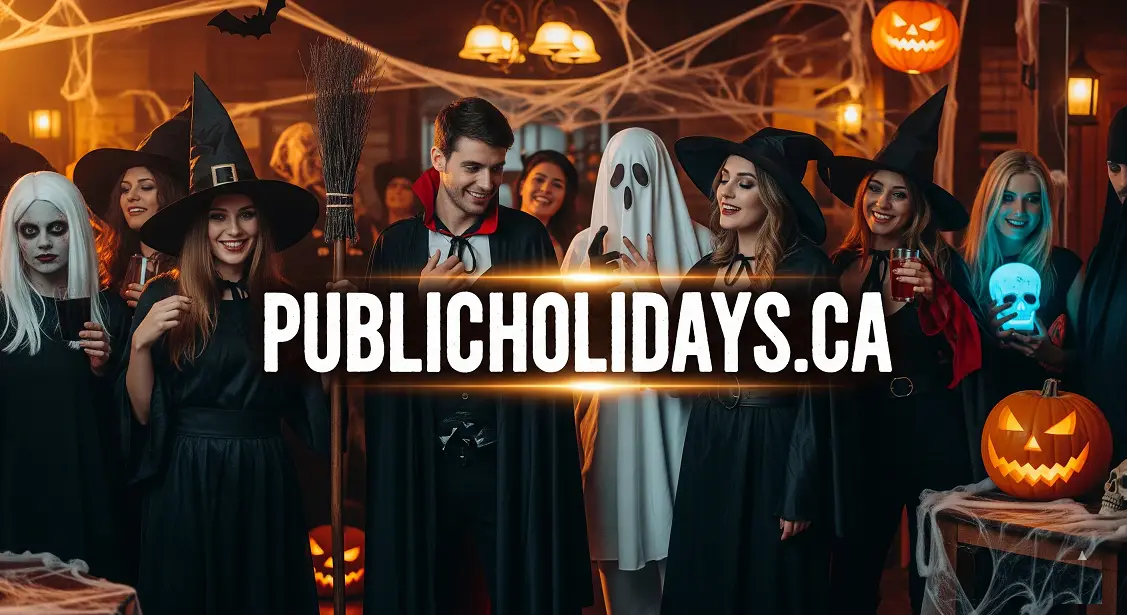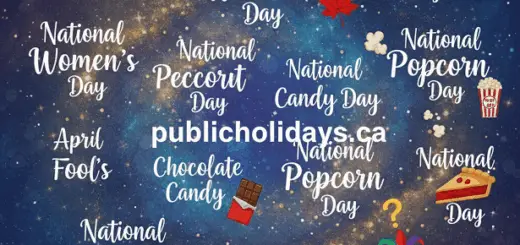Halloween — Origins, Traditions, Symbols, and Modern Celebration

Halloween, celebrated every year on October 31, is one of the most widely observed cultural events in the world. From trick-or-treating and costume parties to haunted houses and pumpkin carving, Halloween is a holiday that combines ancient traditions, folklore, and modern imagination. This article explores Halloween’s rich history, its evolution through the centuries, and the many ways people celebrate this spooky night across the globe. Jack-o’-lanterns glow on stoops, costumes range from whimsical to terrifying, and neighbourhoods come alive with the pitter-patter of tiny feet and the rustle of candy wrappers.
At a Glance: What Is Halloween?
Halloween is popularly known as a night of costumes, trick-or-treating, haunted attractions, and pumpkin carving. But behind the parties and candy are older layers: a pagan festival marking the end of the harvest, a Christian liturgical vigil (All Hallows’ Eve), and centuries of folklore about spirits, the dead, and liminal time. Over time, these threads wove together into the modern holiday we know today: a blend of the sacred and the playful, the ancient and the commercial.
Roots in Samhain: The Ancient Origin
The earliest direct ancestor of Halloween is the Celtic festival of Samhain (pronounced sow-in), celebrated by the peoples of ancient Ireland, Britain, and northern France. Samhain marked the end of the harvest and the beginning of winter, a season often associated with death and scarcity. It was a liminal time — a threshold between seasons — when the boundary between the world of the living and the world of spirits was believed to be thinner.
At Samhain, communities maintained the hearth, lit bonfires, offered food to ancestors and wandering souls, and wore masks or disguises to confuse or placate supernatural beings. Livestock were brought in and carefully tended; funerary and commemorative rituals were common. The festival’s emphasis on endings, protection, and the presence of the dead shaped many later practices associated with Halloween.
Christian Layering: All Hallows’ Eve and All Souls
As Christianity spread through Celtic regions, church authorities often repurposed or reinterpreted local festivals. November 1 became All Saints’ Day (also called All Hallows), a day to honor saints and martyrs, and November 2 became All Souls’ Day, dedicated to prayers for the dead. The night before All Saints’ Day — October 31 — became All Hallows’ Eve, eventually shortened to Halloween. Many Samhain traditions were folded into these observances: bonfires and prayers for the dead continued, though the ritual language shifted toward Christian forms.
Medieval & Early Modern Practices
In medieval Europe, the nights around All Souls were marked by processions, almsgiving, and the custom of “souling”: poor people would go door-to-door, receiving cakes or “soul cakes” in exchange for prayers for the dead. In parts of Britain, children and masked groups performed mumming — short folk plays — during the season. These customs kept alive the mixture of communal performance, food exchange, and remembrance that would later appear in the secular Halloween traditions of North America.
Halloween Crosses the Atlantic
European colonists and immigrants brought their seasonal customs to North America. A particularly decisive influence was the wave of Irish immigration during the mid-19th century, propelled by famine. Irish and Scottish settlers brought Samhain customs, superstitions, and rural games that gradually merged with American harvest celebrations and community parties. By the late 19th and early 20th centuries, Halloween in the United States evolved into a community-centred holiday full of games, masquerades, and neighbourhood gatherings.
Trick-or-Treating & The Rise of the Candy Economy
Trick-or-treating developed from various older customs: souling, mumming, and American “play parties.” Children going door-to-door for treats became widespread in the early 20th century, and by the 1950s and 1960s, it had become a dominant Halloween activity in suburban America. The postwar growth of confectionery industries and mass marketing helped solidify candy as the holiday’s main commodity. Today, billions of dollars in candy, costumes, decorations, and hospitality are associated with Halloween each year.
Symbols & Their Meanings

Jack-o’-Lanterns
Carving pumpkins (originally turnips or other root vegetables in Europe) became a way to produce protective lanterns. The term “jack-o’-lantern” traces to folklore about an elusive soul or mischievous man named Jack doomed to wander with only a carved turnip to light his way. Pumpkins, abundant in North America, became the preferred medium in the United States, producing the iconic glowing faces we recognize today.
Costumes & Masks
Wearing costumes has layered meanings across cultures: disguise to avoid spirits, role reversal and license to behave outside social norms, and sheer play. Costumes allow people to try on identities — monstrous, comic, historical, or glamorous — and in doing so, they enact a time-honoured ritual of transformation.
Black Cats, Witches, & Ghosts
Many Halloween images come from medieval and early-modern beliefs about magic and the supernatural. Witches and their familiars, particularly black cats, became associated with the season partly due to these earlier witchcraft panics and the way marginalized beliefs were linked to darkness and the unknown. Ghosts reflect the festival’s connection to the dead, while other creatures (bats, owls, spiders) evoke night and the uncanny.
Regional & Global Variations
While Halloween is most visible in the United States, other countries celebrate similar or related festivals with distinct flavours.
Ireland & Scotland
In the holiday’s ancestral homelands, Samhain-inspired customs persisted longer. Traditional games such as apple-bobbing and bonfires continued well into the 19th and 20th centuries. In recent decades Ireland and Scotland have also adopted many American-style customs — costumes, pumpkin carving, and trick-or-treating — while retaining local folklore and community festivals.
Mexico: Día de los Muertos
In Mexico, the Day of the Dead (Día de los Muertos, November 1–2) shares the theme of honouring the dead but differs in tone and practice. It’s a festive time to honour ancestors with altars, marigolds, food offerings, and music. Rather than trying to repel spirits, the tradition welcomes and remembers them, blending indigenous Mesoamerican beliefs with Catholic practice.
United Kingdom
The UK features a mixture of older British customs and American influences. Guy Fawkes Night (November 5) with bonfires and fireworks historically overlapped with autumnal celebrations, and many communities observe both events. Trick-or-treating and Halloween parties have grown in popularity in recent decades.
Japan
Japan has adopted Halloween as a lively, largely secular festival focused on costumes and public parades, particularly in entertainment districts and theme parks. While it lacks a tradition of trick-or-treating, Halloween provides an opportunity for cosplay and street parties.
Other Countries
Countries across the globe have adapted Halloween in local ways — from themed events in urban centers to adopting aspects of the holiday as part of youth culture. Sometimes it blends with local festivals for the dead or autumn harvest rituals.
Modern Traditions & Popular Practices
Costume Parties & Cosplay
Costume parties range from family-friendly gatherings to elaborate adult events and professional cosplay conventions. Popular costumes follow pop culture — movie characters, viral memes, and nostalgic throwbacks — but the classic stock of witches, vampires, and zombies remains ever-popular.
Haunted Houses & Attractions
The commercial haunted attraction industry has exploded, offering immersive scare experiences, escape rooms, and wellness-adjacent “dark tourism.” Many communities run seasonal haunted houses created by volunteers, while larger theme parks stage professional horror shows and scare zones.
Pumpkin Carving & Decorations
Pumpkin carving is a communal craft and spectacle. Some people favour whimsical designs; competitive carvers create elaborate sculptures. Homes and public spaces are decorated with lights, tombstones, ghoulish inflatables, and creative displays that turn neighbourhoods into themed environments.
Trick-or-Treating Etiquette & Safety
Trick-or-treating can be delightful but requires planning: well-lit routes, reflective costumes, adult supervision for young children, and safe candy inspection practices are common recommendations. Many communities organize trunk-or-treat events (car-park trick-or-treating) as a contained alternative.
Food, Drink & Seasonal Fare
Halloween tastes vary widely by country and culture. In the United States and Canada, candy reigns supreme: chocolate bars, lollipops, and seasonal treats like candy corn. Autumnal flavours — apple cider, pumpkin pie, caramel apples, and spiced beverages — are staples of seasonal menus. In Mexico, pan de muerto and sugar skulls carry symbolic meaning for Día de los Muertos.
Music, Movies & Pop Culture
Halloween has a robust pop-culture presence: from family classics like Hocus Pocus and It’s the Great Pumpkin, Charlie Brown to horror staples like Halloween (1978), Nightmare on Elm Street, and modern psychological thrillers. Seasonal playlists mix novelty hits (such as “Monster Mash”), eerie instrumentals, and modern pop anthems geared toward costume parties and haunted attractions.
Economics: The Business of Halloween
Halloween is an economic juggernaut. Retail sales include costumes, decorations, candy, party supplies, and hospitality spending. The holiday supports small businesses — costume makers, pumpkin farms, local artisans, and event organizers — and drives marketing campaigns across industries eager to tap seasonal demand.
Community & Cultural Impact
Beyond commerce, Halloween plays a role in community life. Block parties, school fundraisers, volunteer-run haunted houses, and charity pumpkin patches create social ties. The holiday also raises questions about cultural sensitivity — for example, debates around costume choices that appropriate or stereotype cultures — prompting public conversations about respect and responsible celebration.
DIY Decorations & Sustainable Ideas
Many households prefer do-it-yourself decorations: repurposed fabrics for ghostly drapes, carved gourds, homemade gravestones, and recycled materials for lanterns. Sustainable alternatives include composting pumpkins after the holiday, choosing beeswax candles over single-use plastics, and selecting natural decor like hay bales and corn stalks that can be reused or returned to the soil.
Safety & Inclusive Celebrations
Safe celebrations are inclusive celebrations. Tips include offering non-food treats for children with allergies, having clear information about accessibility for those with mobility or sensory needs, and setting community norms that discourage vandalism and encourage mutual respect. Establishing “quiet hours” or designated low-sensory trick-or-treating times helps families with autistic children or those who need a calmer environment.
Halloween & Memory: Why It Endures
Why does Halloween endure? It answers several human needs at once: ritual around seasonal change, controlled engagement with fear, communal play, and the chance to rehearse identity through costume. It lets communities face and domesticate fears in a socially sanctioned way: children test the boundary between fright and fun, adults indulge nostalgia and creativity, and societies practice both remembrance and transgression in contained, festive forms.
Fun Facts & Trivia
- Orange and black are the traditional colours of Halloween: orange for harvest and black for death and night.
- The largest pumpkin ever recorded weighed over a ton — competitive pumpkin growing is a real seasonal sport.
- Candy corn, invented in the 1880s, remains a divisive but iconic Halloween treat.
- The word “Halloween” first appeared in print in the 16th century as a shortened form of “All Hallows’ Evening.”
How to Celebrate — Ideas for Everyone
- Host a neighbourhood costume parade or potluck to encourage community interaction.
- Plan a horror-movie marathon for adults or a family-friendly movie night for children.
- Visit a local pumpkin patch and turn pumpkin picking into a mini autumn adventure.
- Make treats from scratch: caramel apples, pumpkin bread, or themed cookies.
- Volunteer at community events or help organize donation drives tied to seasonal festivities.
Conclusion
From its ancient Celtic roots to modern haunted attractions and themed pop-culture phenoms, Halloween remains a vibrant, evolving holiday that balances memory and invention. It invites people of all ages to perform, to play, and to imagine. Whether you prefer the family-friendly joy of trick-or-treating, the theatrical thrill of elaborate costumes, or the communal craft of carving a pumpkin, Halloween offers something essential: a sanctioned night in which the world tilts a little toward the uncanny — and we celebrate together.
Click here for more national holidays and find a reason to celebrate every day in your life!




